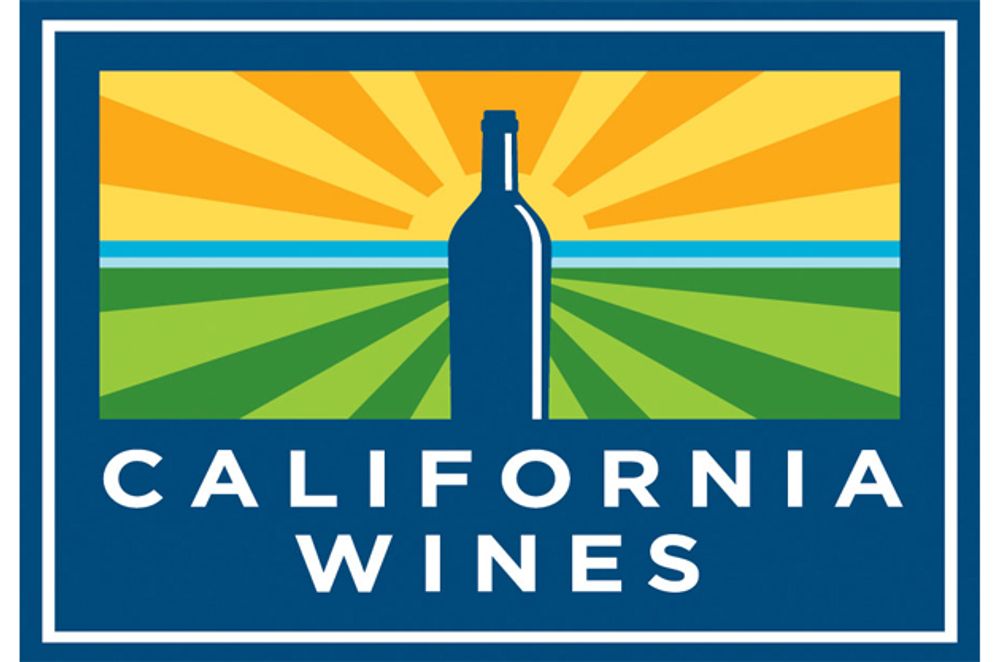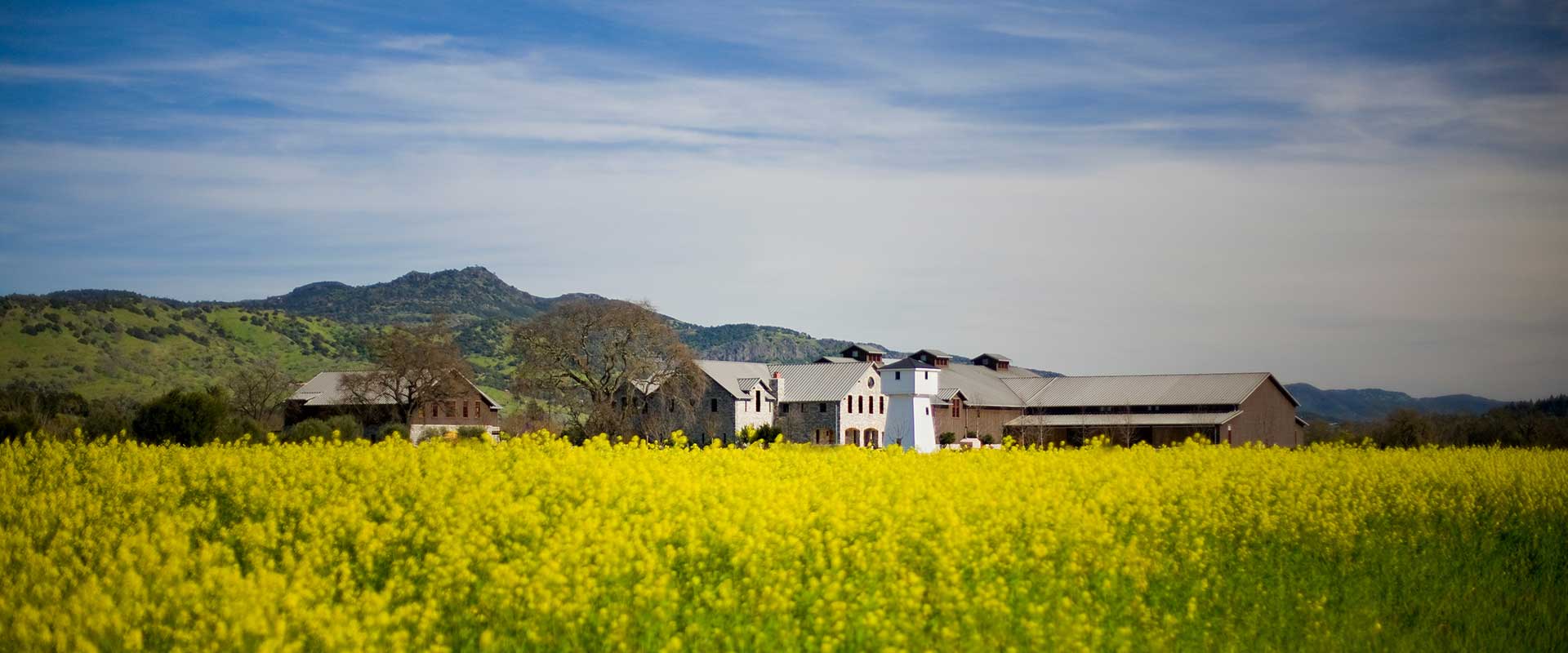Richard Siddle, looks at how the desire to make wines sustainably is changing the face and dynamics of the premium Californian wine scene.
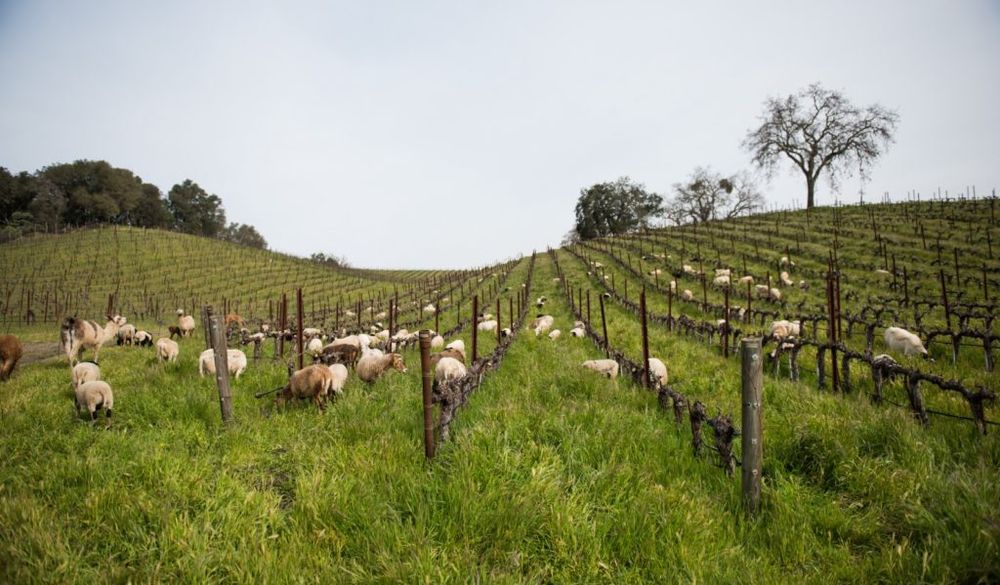
Taking steps to make your vineyards sustainable is what is driving many producers like here at Tablas Creek (Picture: Brittany App)
It might seem strange to talk about Californian winemakers still looking for their own identity and place in the winemaking world when you consider the state is home to some of the industry’s most iconic wines, and is responsible for producing 90% of all wine made in the United States. What’s more its global reputation for producing super quality wines that regularly rattle up to 95 to 100 points on the Parker richter scale, attract a staggering 24m tourists to the region every year.
But for all its fame, particularly around the pomp and circumstance that has surrounded some of the biggest names and price points in Napa, there is also a recognition, admitted publicly or not, that a lot of its reputation has been built on trying to be something its not.
First, like so much of the New World, there was a burning desire to be taken seriously by the French with so many of its wines made from all the classic Bordeaux varieties, pivoted around Cabernet Sauvignon.
All of which culminated in California beating the French at their own game at Steven Spurrier’s famous Judgement of Paris tasting in 1976 – a moment in California’s history that still has huge significance today – mentioned at every winery visit we made, in Napa in particular.
Then came the power of Robert Parker and the necessity of making wines that suited his palate, and more importantly the points he gave you. Could you really afford to break free and make a wine that did not get 90 plus Parker points and continue to make wine in this super competitive – and expensive – state?
Doing things for themselves
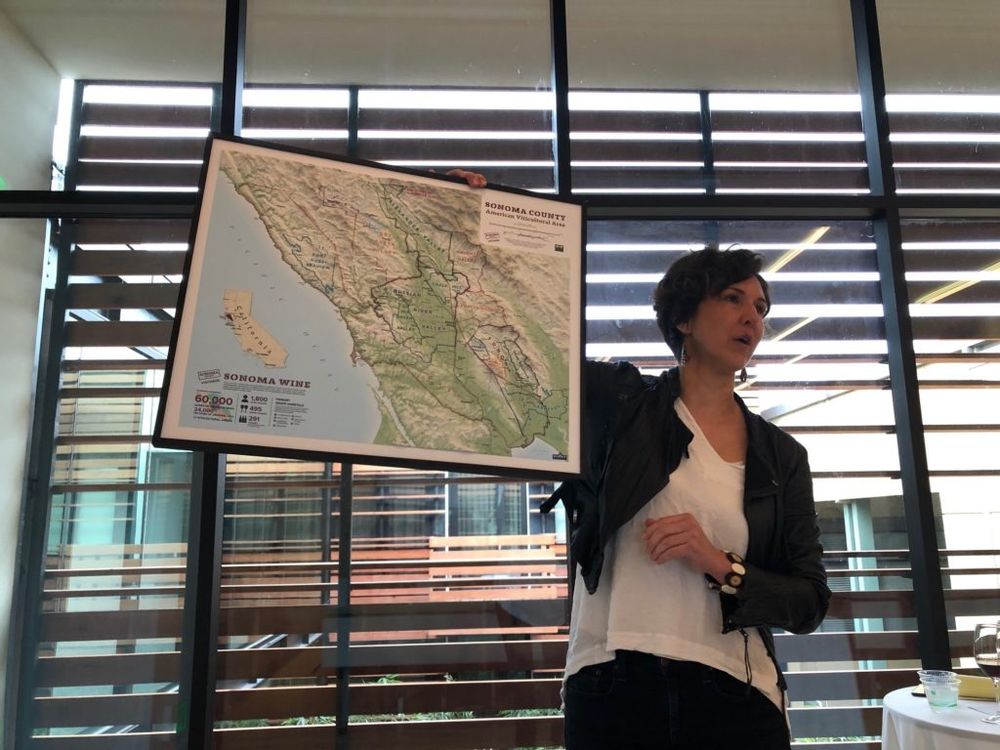
California is now looking to do things differently says wine writer, Elaine Chukan Brown
But, as with so many other countries and regions in the New World, most notably South Africa and Australia, the penny has finally dropped that to make the best wines they can, in all areas of California, producers need to stop coveting the French and following the whims of a powerful wine critic. Instead they need to look only at themselves, their properties, their vineyards, soils and the climate they are grown in and make wine based entirely on those factors.
The fact you might still be using all the classic Bordeaux Cabernet Sauvignons, Merlots and Petite Syrahs to do so is just part of the answer, it’s not the beginning, middle and end.
“California is now looking to do things differently rather than just do things the way they were,” is how respected US wine writer and critic, Elaine Chukan Brown puts it. “It’s now all about interpreting what you have in your own vineyards.”
And like so many other New World wine regions that wake up call has also coincided with a greater understanding and widespread sharing of information of how their individual and collective vineyards work. It’s no coincidence that California’s new found confidence over the last 10 to 15 years to make wines that are true to their state has also seen the introduction of a myriad of new AVAs (American Viticultural Areas). Each of which can pin point exactly the right kind of varieties to be grown there, and what viticultural practices to use to make the most of them. Of the 188 AVAs in the US, 138 are in California, of which close to 40 have been formed in the last 15 years, which govern the use of 110 different grape varieties.
It’s when you analyse where those AVAs are situated that you see where California’s power base is. For Napa might only be responsible for 4% of California’s total production, it has 14 separate AVAs covering its 45,000 acres of vines. Neighbouring Sonoma racks up 18 AVAs and 60,000 acres of vineyards.
Digging deeper
There is talk of plenty more AVAs to come as winemakers and viticulturists alike dig even deeper into their soils and climates to assess what can be grown where. Which is not surprising when you consider California as a whole has 2,800 soil types to play with.
This better understanding of what vineyard can do what is also, in part, a factor in the growth of so many prestigious red blends now being produced in California, says Chukan Brown. Which in turn has helped “revive” so many vineyard areas and vines, particularly older vines.
“Take mountain Cabernet. It has emerged as a style that is now a robust category in its own right,” she adds. “These vines and wine have always been there, but it is only now that we are recognising and distinguishing the real differences that they have.”

Part of that change in approach, and philosophy if you like, has also been reflected in the enormous steps the Californian wine industry has taken to invest in sustainability schemes that are arguably now as much a part of the region’s DNA as their Cabernets, Zinfandels, Pinot Noirs and Chardonnays. Initiatives that are now some of the leading sustainability schemes in the world, like Lodi Rules and Napa Green, culminating in the all encompassing Certified Sustainable scheme, whose logo you can now start seeing on bottles and labels.
As the tagline says it is all about tracking ‘Sustainability from Grapes to Glass’. To qualify a wine has to be made in a certified winery and any particular label has to include a minimum 85% of grapes from certified vineyards, with 100% of them coming from California.
All of which has given producers and winemakers a whole new way of looking at their vines and vineyards. An approach to winemaking that starts with truly understanding the climatic and soil conditions where they are making their wines.
Sustainability numbers
In fact you can’t realistically talk about Californian wine, without also talking about its sustainability. Just look at the numbers:
- California now has 300,000 hectares and growing of certified vineyards, which is ahead of South Africa, Chile, New Zealand and Australia in that order.
- Over 400m cases of certified sustainable wine is now produced in California that far outstrips that being produced across the rest of the New World.
- Which means 70% of wine cases are now produced in a certified winery which is expected to go up to 80% when the next sustainability report is published in 2020.
- 75% of vineyards are participating in sustainable programmes including 140 vineyard practice and 104 winery practices
- 647, 537 cases of California’s 2017/2018 vintages are covered by the certified wine label notification scheme.
- The Lodi Rules for Sustainable Winegrowing programme was the state’s first third-party formal initiative, started in 2005, and now covers 47,000 acres in 13 crush districts across California. In Lodi itself 24,129 cases of certified wine are produced each year, from 28,000 certified acres.
- Since its inception in the early 2000s, more than half of all vineyard acreage in Napa County (25,000 acres) has been certified and more than 80 Napa wineries have enrolled – accounting for 40% of all sustainable winery certifications statewide.
- In 2015 Napa Valley Vintners pledged 100% of its members would participate in in the certification scheme by 2020; currently more than 70% of eligible members are involved.
- Napa Green Certified wineries implement more than 100 measures, going beyond regulatory compliance, to achieve certification.
The challenge, however, is to get even more wineries and growers involved and then look at how it then best communicates what these sustainable measures actually mean when looking to export and market its wines around the world. How can it make them as relevant as possible to the demands and needs of buyers at major retailers, particularly the Scandinavian monopolies, that each have their own assessments and guidelines of what they mean by sustainability that are not easy to come by.
It’s all about the sea
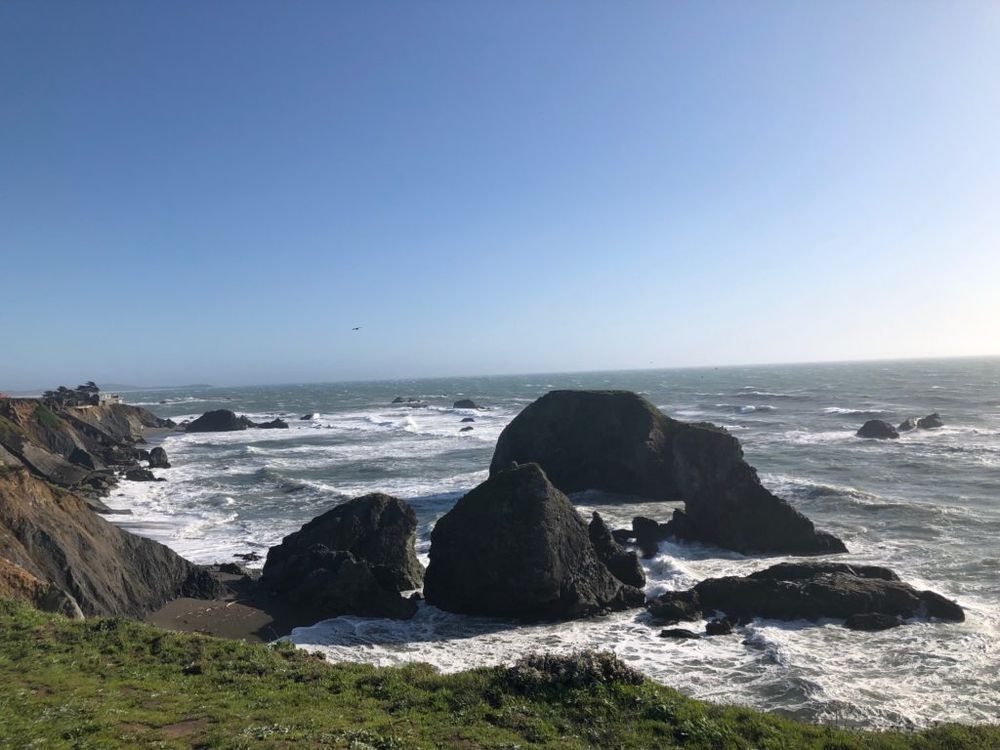
The winds and temperatures that come off the Californian coast, like here close to Bodega Bay, have an enormous influence over the style of wines that can be made
The biggest influence on Californian winemaking is no longer Bordeaux, but the all conquering influence of the Pacific sea that runs up the 1,300km of Californian coastline. Everywhere you go winemakers will talk about the “maritime influence” on their vines and grapes with the sea acting like a cooling blanket across the region, particularly across northern California.
You really have to experience the brutal winds that come in off the Pacific for yourself to really appreciate what they mean by “maritime influence”. It also means that for large parts of the day many Californian vineyards are covered in a bitter fog that slows burns off during the day, only to return again in the evening and night.
It is those huge swings in temperature that give the grapes their unique characteristics with the cold winds and fog from the west clashing with the heat from the east to create California’s very own micro climate.
Matt Stamp, the respected local Master Sommelier who runs his own wine bar and restaurant, Compline in Napa, describes it as the region’s very own “air conditioning” system. “It is what helps preserve the acidity in out wines,” says Stamp. “That diurnal shift is key to defining the styles of wine we make here.”
Each AVA will be influenced by the sea, the winds, the fog and big temperature changes in their own way. It’s why it’s common to see many of the Napa and Sonoma producers, for example, taking fruit from a wide range of growers, covering different zones of vines.
Black Stallion Winery, part of the Delicato Family Vineyards, for example, sources fruit from each of the Napa AVAs to help make its range of blended wines, particularly for its Transcendent, Bucephalus and Barrel Reserve premium blends. It’s like a chef picking the best fresh ingredients for a dish. If you have the choice available then it makes sense to make the most of it, says David DeBoer, Delicato’s general manager for exports and international division.

Delicato’s export general manager, David DeBoer, says it takes its grapes from multiple sites.
Driving growth
This drive to make more premium wines that are true to their place is also being pushed so heavily in California because so much of its wine is produced by such dominant and influential wine families. Businesses that are looking at their vineyards as assets to be used by their respective families for generations to come, and not the short term decision making of shareholder driven conglomerates.
E&J Gallo might be by far the biggest, but as well as having the world’s largest family-owned wine business, the region can also boast to have the second biggest with Trinchero Family Estates, the owner of the Sutter Home wine brand, that produces some 13 million cases a year.
It is these families, that are behind so many of the sustainable initiatives in the region. Trinchero’s 250 acres of Napa vineyards, for example, are all certified Napa Green, whilst its 7,000 acres in Lodi are under the Lodi Rules programme.
Gallo has a commitment that it will only ever convert a maximum 50% of the land it owns for a particular producer to vines. Dedicating the rest to improving the overall biodiversity of the land. The Frei Brothers property, for example, covers 1,200 acres of which 630 are planted with vines, the rest it looks to manage with cover crops that will naturally benefit the future health of the vines.
The fact it owns so many properties in different regions and AVAs means it can also widen the experience of its winemaking team and share their expertise working on different properties, explains, Edouard Baijot MW, Gallo’s head of fine wine.
Sustainable through acquisition
These families are also behind most of the recent acquisitions that have taken place in California. After all it is one thing knowing where to go to make the best wines, it does not mean a lot if you don’t have any access to the best fruit being grown there.
Whilst E&J Gallo is clearly leading the way on the acquisition trail, it has seen more medium sized players like Delicato expand out of their heartland in Lodi and look to acquire properties in more premium regions like Napa. Which for Delicato saw the purchase of the Black Stallion winery in 2010.
“We have had great success with our wines in Lodi and Monterey and we wanted to showcase what we could do in Napa. Having a winery in Napa means we also now have multiple tiers of quality in our range. It’s part of having a tiered approach to your portfolio,” explains DeBoer.
Delicato, which is now distributed in the UK through Bancroft Wines, sees that approach as also being key to its export strategy, which makes up around 19% of its production, driven largely by its Gnarly Head Zinfandel brand from Lodi which is 22% exported.
“We have a real commitment to exports and happy to see that figure up 19% compared to a lot of Napa wineries which will only be exporting 8% to 10%,” adds DeBoer.
With land so expensive in Napa and Sonoma it is also vital for producers such as Delicato to develop long term contracts with growers so that they can source the best quality fruit from the most coveted AVAs. It’s why where possible it will put in place contracts that might be for 10 years with certain growers so that it can guarantee their supply. Which even includes helping to finance their growth and development.
Different approaches
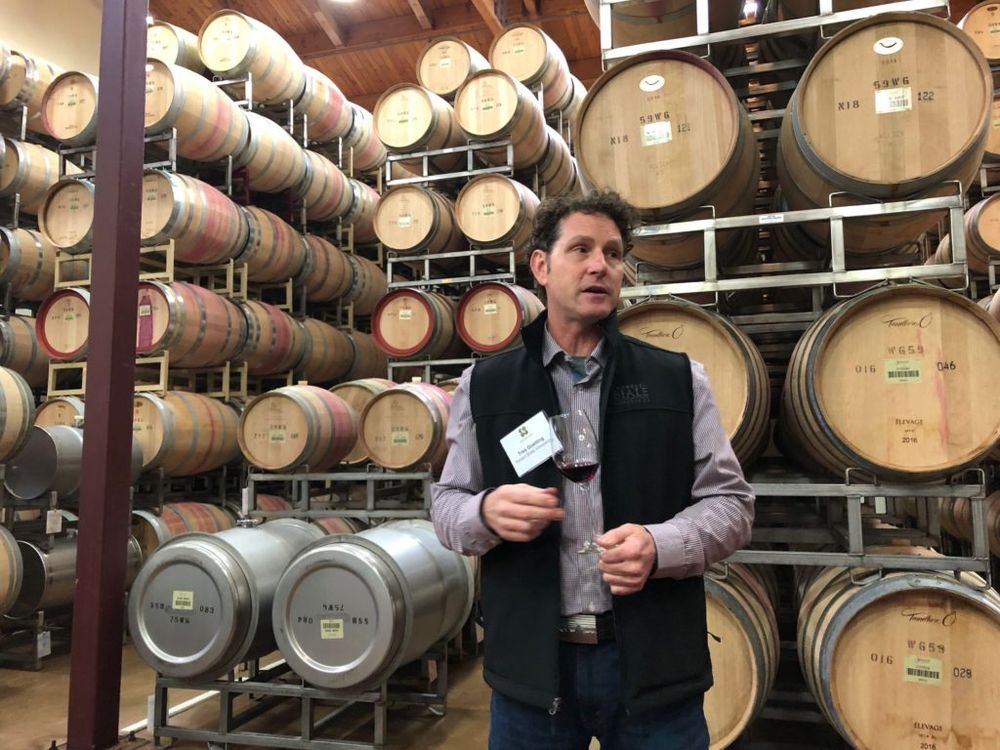
Tres Goetting says Californian winemakers are becoming more confident in their own distinctive styles of wine
With such a diversity in supply, it means it can also take a different approach in how it makes different wines, says Delicato’s chief winemaker, Ralf Holdenried. “In some vineyards we might do open fermentation, and whole bunch pressing, in another we could do a cold soak and some de-stemming,” he says. “We are certainly not making wine to a specific palate. We want to show what Napa, say, can do stylistically with different wines.”
“It’s fair to say that 20 years ago winemakers were trying to mimic Bordeaux, but we now realise we can make wine that is more in tune with Napa, its climate, its soils,” he adds.
It therefore makes both environmental and commercial sense to look after those all important soils and vines. The fact areas such as Napa and Sonoma are blessed with such natural resources is a gift that keeps on giving to those winemakers and producers willing to go the extra steps to make sure they are looking after them.
As Tres Goetting, winemaker at Robert Biale Vineyards, says Napa producers have one great advantage: “We have the confidence here to make good wine because we are working with such quality fruit. Even in a bad harvest we still have good fruit to work with.”
They are also lucky, he adds, to be working with some of the oldest vines in the state – in his case heritage vineyards of Zinfandels that date back to the 1880s.
Everywhere you turn in California it feels producer after producer is trying to go the extra step to be more sustainable. Rather than drag their feet, they are jumping forward looking to find new ways of working.
Real recognition
Crucially they are also being recognised for their efforts. The Sustainable Winegrowing Leadership Awards are now into their fifth year giving recognition to those producers that are leading the way. It is also importantly a joint awards scheme that covers the California Sustainable Winegrowing Alliance, California Association of Winegrape Growers, Wine Institute, Lodi Winegrape Commission, Napa Valley Vintners, Sonoma County Winegrowers and the Vineyard Team ensuring all their interests are covered.
The most recent recipient of the Leader award, given for their environmental, social and economic practices was Silver Oak Cellars.

Old vines dating back to the 1880s are attracting more ambitious winemakers to Lodi
Then there is the Historical Vineyards Society that was set up in 2011 by a number of influential producers such as Robert Biale and Joel Peterson to act as a non-profit organisation dedicated to the preservation, and also the registration and recording of California’s historic vineyards. Many of which date back to the 1880s.
The initiative is helping to “revive” so many vineyard areas and vines, particularly older Zinfandel vines, says US wine writer Elaine Chukan Brown. “The Historic Vineyard Society, with the help of winemakers such as Joel Peterson, has helped give a new meaning to these vines and is helping to make more site specific wines.”
The fact that many of these old vineyard plots are now so sought, is good news not only for the future of these historical vines, but what they can do to educate and inform future winemakers about what needs to be done for a sustainable future for the region.
They also reflect the changing face of California where it is what in your soils that really determines you as a winemaker, not the points of a wine critic.
- Over the coming weeks The Buyer will be running a series of articles, insights, profiles, and interviews on different aspects of the Californian wine scene in a new link-up with the Wine Institute of California.
- You can find out more about what the Institute is doing to promote Californian wines around the world as well as explore the whole region in terms of its styles, grape varieties and key trends at its main US website here.
- You can also explore statistics and fact sheets on different grape varieties, or take a deep dive into the different sustainable practices and schemes in California here as part of the dedicated UK site for the Wine Institute.
- Sign up to its monthly newsletter here.
